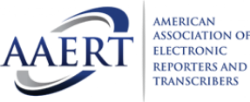How to Enhance the Art of Trial Presentations for Optimal Legal Impact
How to Enhance the Art of Trial Presentations for Optimal Legal Impact
Blog Article
The Power of Visuals in Trial Presentations for a Winning Disagreement
The combination of visuals in test discussions has actually arised as an important variable in properly connecting intricate debates to jurors. By making use of numerous kinds of aesthetic help-- be it diagrams, pictures, or computer animations-- attorneys can improve understanding and retention, eventually shaping the jury's perception of the instance.
Relevance of Visuals in Tests
In lots of lawful settings, visuals play an essential role in enhancing the effectiveness of test discussions. The combination of visual elements can significantly influence jurors' understanding and retention of complex information, therefore forming their understandings and decisions. Visuals, such as graphes, representations, and photos, can simplify detailed stories, making them much more accessible and engaging.
Additionally, the human brain procedures aesthetic information more successfully than text, which underscores the relevance of integrating visuals into lawful arguments. By converting dense legal ideas into aesthetic formats, lawyers can assist in clearer interaction, ensuring that bottom lines are not overlooked throughout trials.
Furthermore, visuals serve to involve jurors on an emotional level, cultivating a connection to the instance that words alone may fall short to accomplish. The critical use visuals can stimulate empathy, motivating jurors to consider the human elements of the case.
Eventually, the importance of visuals in trials hinges on their capability to enhance clearness, enhance juror interaction, and enhance the story being presented. This potent mix is necessary for crafting persuasive disagreements that reverberate with jurors and affect the result of lawful process.
Sorts Of Visuals to Utilize
Reliable trial presentations can substantially benefit from a range of aesthetic devices that deal with different elements of the instance. trial presentations. Making use of diagrams and charts can successfully damage down complex information, making it a lot more absorbable for jurors. Flowcharts can illustrate the sequence of events, while bar graphs may succinctly compare appropriate data points.

Animations and simulations can additionally play an important duty, especially in situations entailing technological data or complex circumstances. These visuals can dynamically represent processes or activities, giving clarity and interaction that fixed photos might not achieve.
Furthermore, infographics combine text and visuals to summarize important info efficiently. They can provide timelines, stats, and considerable situation points in a visually attractive manner, making it simpler for jurors to comply with the argument.
Enhancing Comprehension and Retention

Enhancing understanding and retention throughout trial presentations is critical for making certain that jurors realize the necessary why not try here aspects of a case. Aesthetic help act as powerful devices hereof, translating intricate details into easily learn the facts here now absorbable styles. By utilizing graphes, representations, and infographics, attorneys can streamline elaborate information and emphasize essential factors that may otherwise be forgotten.
Research studies have revealed that individuals preserve info significantly much better when it exists aesthetically. This is especially relevant in a test setting, where jurors might be overwhelmed by the quantity of evidence and statement. By strategically including visuals, attorneys can route jurors' attention to one of the most crucial facets of the case, enhancing their understanding and memory of the material provided.

Creating Involving Presentations
Exciting jurors' attention throughout trial presentations is necessary for conveying an engaging story. Engaging discussions utilize visual components to develop a remarkable experience that resonates with jurors. The strategic use of graphics, animations, and videos can clarify complex details, making it more obtainable and relatable.

Additionally, including storytelling strategies can enhance involvement. Presenting proof in a logical series that builds sob story enables jurors to connect with the product on an individual level. Numerous presentation styles, such as incorporating short video or interactive elements, can additionally sustain rate of interest and focus throughout the trial.
Inevitably, an engaging presentation cultivates a more profound understanding of the instance, enabling jurors to much better value the arguments existing and bring about a more positive end result.
Case Research Studies and Success Stories
Countless study highlight the substantial influence of visuals in trial presentations, demonstrating their capacity to affect juror perceptions and ultimately the results of instances. A remarkable instance entailing a personal injury claim illustrated how the use of a 3D animation of the accident scene clarified complex details. Jurors reported feeling more informed and empathetic, significantly swaying their decision in favor of the complainant.
In an additional circumstances, a company lawsuits situation used infographics to present monetary data and timelines, making intricate information accessible. The aesthetic depiction made it click for more possible for jurors to comprehend the nuances of the case much more effectively than spoken descriptions alone. trial presentations. Consequently, the jury returned a verdict that went beyond the customer's expectations
The engaging visuals not only aided in creating uncertainty however additionally resonated emotionally with jurors, leading to an acquittal. These success tales highlight the necessity of integrating visuals right into trial discussions, as they enhance understanding, retention, and inevitably, the persuasive power of lawful arguments.
Verdict
In final thought, the critical incorporation of visuals in trial presentations substantially boosts jurors' understanding and retention of complex information. Engaging presentations, supported by compelling situation researches, show the extensive influence that visuals can have on persuasive communication.
Report this page